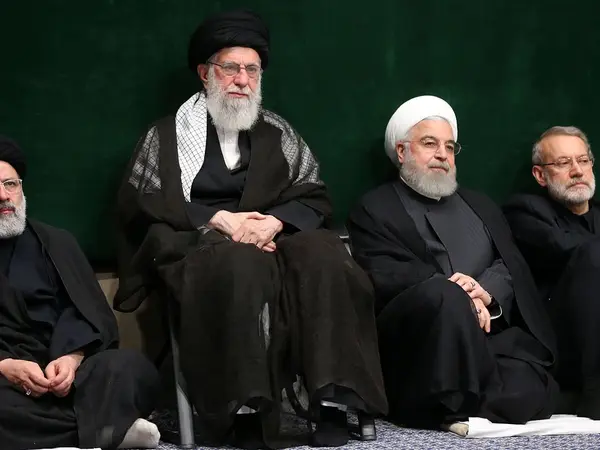Narrowing down the circle of trusted regime insiders, a process dubbed by critics as political "purification" ruthlessly continues in Iran.
This is a process the hard core of the Islamic regime in Iran has persistently followed since 1979. A report in Khabar Online website this week said similar processes in other ideological regimes have gradually led to the collapse of those regimes.
In Iran, the latest examples included the disqualification of former parliament Speaker Ali Larijani in the 2021 Presidential election which came as a surprise even to regime insiders.
Before that the regime's vetting process disqualified and effectively discredited former Presidents Mahmoud Ahmadinejad and his predecessors Akbar Hashemi Rafsanjani who finally drowned during a swim in a suspicious incident, and Mohammad Khatami whose name and pictures are not allowed in government newspapers.
Former Parliament Speaker Ali Larijani openly discussed the process and coined the word "purification" [Khales Sazi, in Persian] for barring some heavyweight regime insiders from elections and giving opportunities to sheepish and more loyal aspirants to rise to power.
Larijani spoke out after he was angered by the publication of a news story on the website of IRGC-linked Tasnim news agency in May.
Supreme Leader Ali Khamenei, ahead of the 2020 Majles elections called for the nomination of "young revolutionaries," signaling a new round of purification.
The outcome was the rise to power of more than 200 new members of parliament who, according to critics, believe in no principle other than climbing the ladder of power, and failed to introduce even one bill that would serve the nation's interests. Their only function so far has been echoing Khamenei's hardline domestic policies and trumpeting his irrational and paranoid anti-US and anti-Israeli foreign policy.
The website wrote that purification started in Iran with the 1905 constitutional revolution during which traditional Shiite clerics opposed any sign of the modernism advocated by intellectuals. The same process was renewed after nearly half a century later with the 1979 Islamic revolution when Ayatollah Ruhollah Khomeini’s supporters set fire to cinemas and cultural centers, barred women from active social life and imposed compulsory hijab.
It was then followed by a "cultural revolution" that led to several years of keeping universities closed and the execution of thousands of young men who believed in ideologies other than that of the Islamic Republic. That was followed by Khamenei's conspiracy theory of a western cultural onslaught which culminated in the murders of intellectuals and writers in the 1990s.
Next came the omission of reform minded individuals in the early 2000s. The same thing happened to President Ahmadinejad when some of his vice presidents were called "deviates" by politicians and clerics close to Khamenei. The development was ironic as Ahmadinejad himself was the product of Khamenei's purification process which involved replacing reform-minded individuals in the government with ultraconservatives.
In a backlash, moderates under President Hassan Rouhani took over for a difficult eight-year period (2013-2021) during which the ultraconservatives went out of their way to obstruct his moves to get closer to the West, with a more open foreign policy.
Khamenei's answer was his biggest purification operation by engineering ultraconservative's takeover of the government and the Majles in the 2020 and 2021 elections.
The method was straightforward. He used the Guardian Council loyal to him to disqualify hundreds of candidates.
Although the consolidation of ultraconservatives' power has led to nothing Khamenei or his men can be proud of, it appears that he is keen to continue the purification.
However, there is no bright outlook for purification in the horizon as it is easy to get rid of the old guard, but it is dreadfully difficult to replace it with others who can run the daily affairs of the state.
